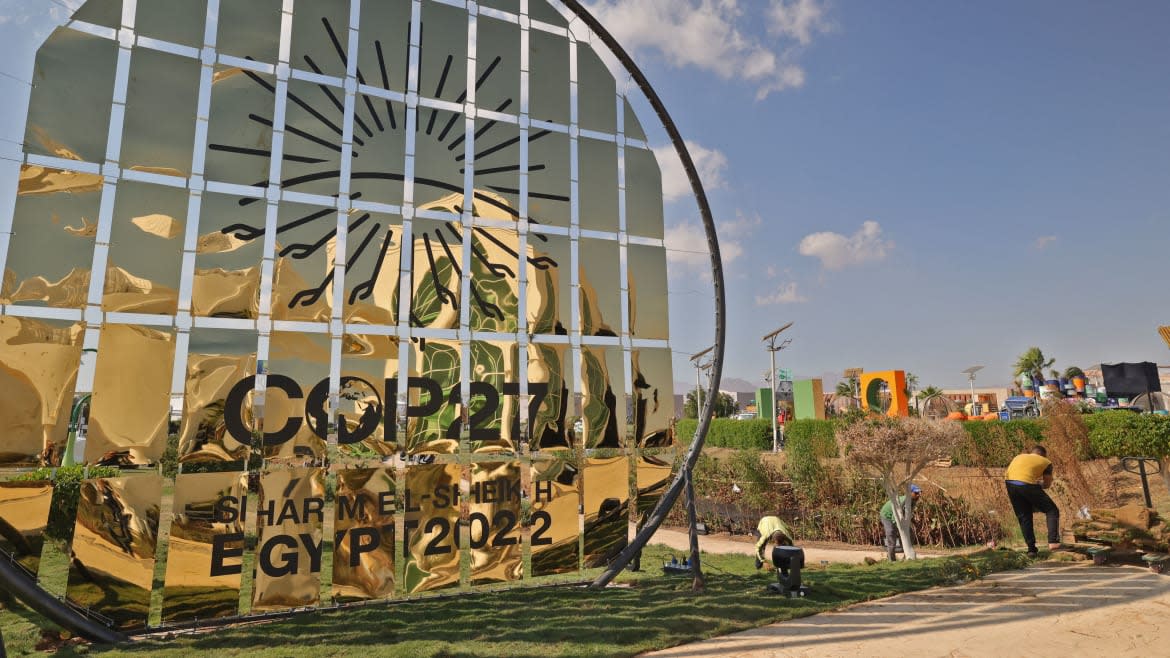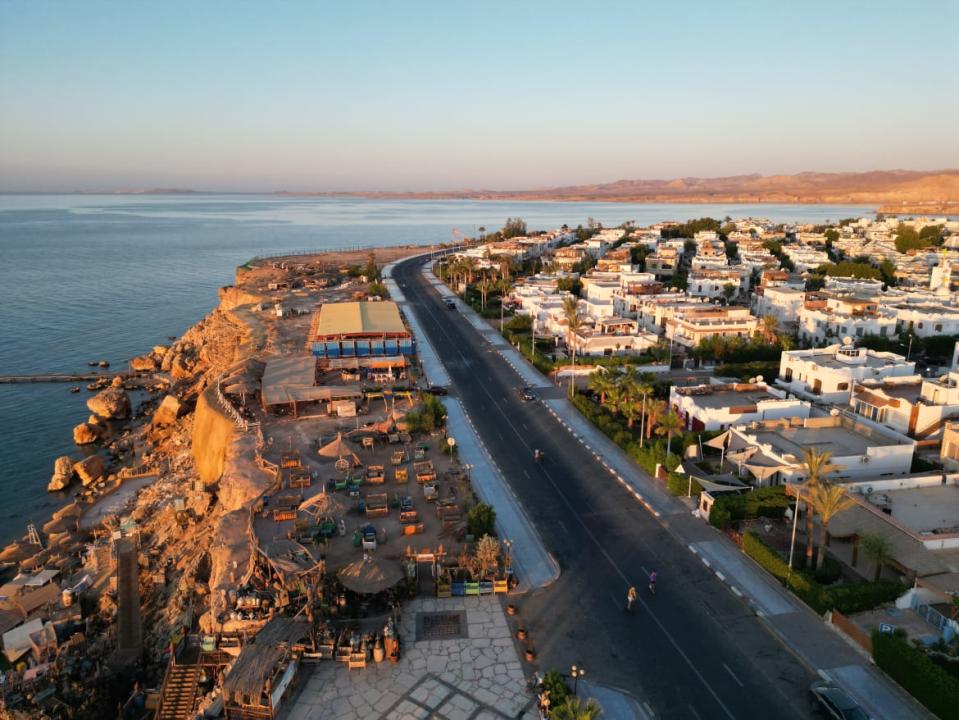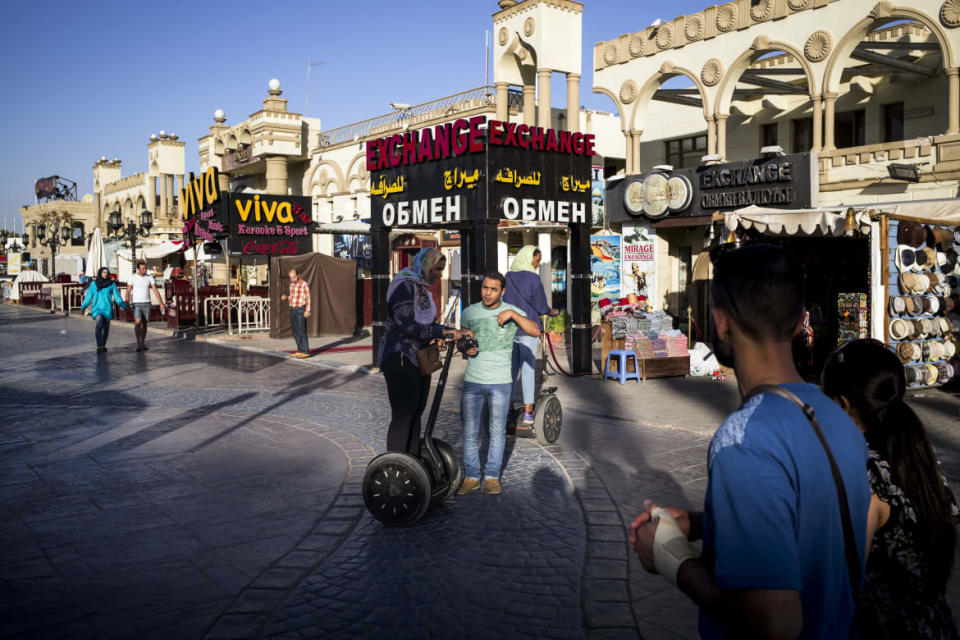Green Hypocrisy Hangs Over This Year’s U.N. Climate Meeting

Minutes into the opening ceremony for the annual United Nations Climate Change Conference, a speaker greeted the audience of world leaders as they filtered into the plenary session, a speaker: “We welcome you to COP27, meeting for the first time in Sharm el-Sheikh, the first green city.”
This honorific has already shaped the way attending delegations are talking about the conference, including, bizarrely, by prompting ostentatious photoshoots of some of the most powerful people in the world posing with bicycles. Notably absent was climate activist Greta Thunberg, who last week called COP27 an opportunity for leaders to engage in “greenwashing, lying and cheating.” And never mind the dubious title of “first” green city, when the Egyptian government had bestowed the designation upon another city mere months ago.
The entire spectacle raises the question: Just what exactly is a green city?
According to Egypt’s Ministry of Environment, Sharm was set to be turned into “an environmentally friendly tourist city at a cost of nearly seven million dollars” by transitioning all the city’s transportation to a fully electric model and powering Sharm’s hotels with solar energy. But experts were wary of being too impressed by the designation, which they say leaves much to be desired.
“For me, what’s most concerning is this is not a green city, this is a green enclave,” Mohammed Rafi Arefin, a geography and climate researcher at the University of British Columbia, told The Daily Beast. Cementing Sharm’s status as an isolated PR stunt, Egypt has directed attention toward its environmentally friendly practices in the resort town, such as building a solar power plant in Sharm capable of offsetting over 4,000 tons of carbon dioxide emissions annually (or about 500 homes’ energy use for a year according to the EPA’s greenhouse gas calculator).

Sharm El-Sheikh, Egypt.
But all the while, Egypt’s government has quietly continued destroying and paving over public green spaces in much larger cities around the country—not to mention bulldozing a UNESCO Heritage Site an hour’s drive from the conference. That these construction projects are targeting trees and parks may not simply be due to carelessness or ignorance, but rather a concerted effort to quash democratic practices. “The really important thing here is that these green public spaces are not just environmentally good, they're also sites that can be used for public organizing and dissent,” Arefin added.
Diving deeper into the recent changes to Sharm, there’s even more reason to be skeptical. Switching public and private transportation to fully electric vehicles is undoubtedly better than doing nothing to curb the emissions of a major contributor to pollution. But Egypt still relies on nonrenewable sources like oil and gas to generate about 80 percent of its electricity. Outside of transportation and hotel management, is food production and procurement being practiced sustainably? How are city officials handling the growing problem of water scarcity in Egypt—a threat that could cause the country to run out of water by 2025? Asking difficult questions may bring us closer to understanding Egypt’s motives in naming Sharm a “green city.”

Tourists stroll and segway along the main street of Nama Bay in Sharm El-Sheikh.
“I think that the designation of ‘green city’ throughout the world is often used by governments to to greenwash,” Arefin said. Policymakers will institute incremental technical changes to a city’s functioning to cut some emissions and qualify for a title that looks good on paper, and neglect the structural and economic transformations necessary to mitigate the disastrous and deadly effects of climate change, he added.
The UN’s Latest Climate Report Is a Final Warning for Action
Critically, there’s a question of whether a tourist destination like Sharm can ever truly be a “green city.” After all, a city that promotes travel from Asia, Europe, and the U.S. is at least partially responsible for the carbon emissions produced by their air travel before and after their stay. In that sense, an “environmentally friendly tourist city” is a lot like COP27 itself: a waddling turducken of hypocrisy, lying to our faces and expecting us to take it seriously.
Get the Daily Beast's biggest scoops and scandals delivered right to your inbox. Sign up now.
Stay informed and gain unlimited access to the Daily Beast's unmatched reporting. Subscribe now.

